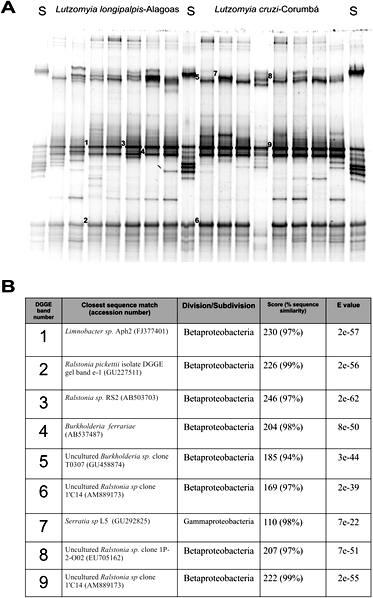
Potential vectors of Leishmania braziliensis Vianna were assessed at four study sites inside the mountainous Valle del Cauca, western Colombia, from March to June 1989. Inside an active focus of transmission at 1450 m altitude, an espresso plantation at Versalles, there has been high densities of antropophilic phlebotomines: Lutzomyia columbiana (Ritorcelli & Van Ty) and Lu.townsendi (Ortiz), within the verrucarum species group, in addition to Lu.pia (Fairchild & Hertig). Inside a comparable altitude in the forest reserve at Yotoco where leishmaniasis is unknown, Lu.pia was the prevalent species and Lu.townsendi was absent. By 50 Percent localities at 1150 m altitude, there has been plentiful Lu.lichyi (Floch & Abonnenc) plus both species inside the verrucarum group, but Lu.pia was absent. One of these brilliant localities, an espresso plantation at Apartment Hermosa where a leishmaniasis outbreak happened in 1986, was as opposed to a leishmaniasis-free, partly wooded nature reserve at Mateguadua. No natural infections of Leishmania come up with in as much as 1896 wild-caught female phlebotomines of no less than seven species. It remains unclear why Leishmaniasis transmission is associated with coffee plantations in this particular part of Colombia. Laboratory-bred Lu.lichyi females were more often than not autogenous, and blood stream-seeking females from the species were always parous. Parity rates in wild-caught females of other species were 55% Lu.pia, 24% Lu.columbiana and 14% Lu.townsendi. Female Lutzomyia infected artificially with Le.braziliensis promastigotes developed peripylarian infections. Greater proportions of Lu.townsendi (96%) and Lu.columbiana (78%) increased to get infected however, these species developed lower rates of stomodaeal infections (P under .1) than Lu.lichyi (37%) or Lu.pia (44%).(ABSTRACT TRUNCATED AT 250 WORDS)
Resourse: https://ncbi.nlm.nih.gov/pubmed/
